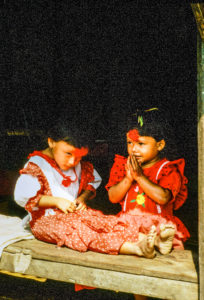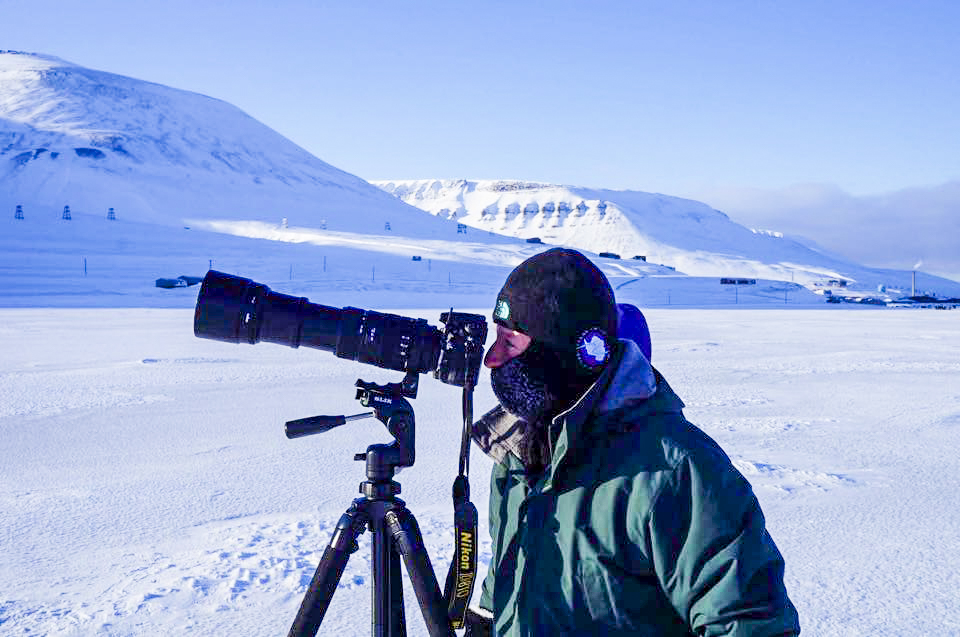Photographing wildlife in its natural habitat is one of the most exciting and rewarding activities I can imagine. From researching the species’ behavior to seeking it (sometimes for days) in the field, to that wonderful moment its image is captured on our memory card and to the thrill of viewing that image when we return from the field, there’s something truly magical about this genre of photography.
 Observing and photographing animals in the wild, such as this rare wildcat along Turkey’s Turquoise Coast, is thrilling. Strive to put the animal’s welfare ahead of your image-making. Buy this photo
Observing and photographing animals in the wild, such as this rare wildcat along Turkey’s Turquoise Coast, is thrilling. Strive to put the animal’s welfare ahead of your image-making. Buy this photo
Done properly, wildlife photography can have zero to very modest negative impact on the creatures whose images we capture. In fact, photographers have done a great deal over the decades to help preserve wildlife through sharing images that inspire local people, governments, and the public to protect endangered species.
But by stalking and encroaching on a species’ territory, we photographers also put wildlife at risk of harm. Improperly engaging with animals with the intent of photographing them can cause a predator to starve by allowing its prey to escape, cause another creature to become prey by distracting it from its natural wariness, stress the animal to harmful levels, or acclimatize them to being around humans.
Here are some important guidelines for photographing wildlife in as safe a manner as possible:
- Do your homework: The more you know before you set out to encounter a creature, the less likely you are to cause it harm inadvertently. If you will be going with a safari or tour, research the outfit first to make sure they follow the highest ethical standards. Get to know the behavior of the species you are seeking. What is their daily and seasonal routine? Where is their habitat? What do they eat and what eats them? What is a safe distance from which to view them?
- Keep a respectful distance: As kids we were told to keep away from wildlife for our safety, but as photographers we also need to consider how far away we must stay in order not to cause the animals undue stress. Knowing where their meal ticket comes from, some safari and tour operators are willing to break park or preserve rules and approach the animals very closely so their clients can get great photos. Do not encourage this. Aside from the harm this stress can cause the animal, a stressed animal will look stressed in your photo and is more likely to bolt and leave you with no photo at all. So, use a long telephoto lens, keep your distance, and both your subject and your images will be the better for it.
- Show special respect for the young: Baby animals are extremely vulnerable and should be treated with special care. If you are traveling with a tour, defer to your guide’s knowledge. If you’re on your own, be sure you’ve done your homework first, and err on the side of caution.
 Young animals, such as this baby baboon in Tanzania’s Serengeti National Park, should be photographed with special care. I made this image using a long telephoto lens and shot from a safari vehicle parked at a respectful distance. Buy this photo
Young animals, such as this baby baboon in Tanzania’s Serengeti National Park, should be photographed with special care. I made this image using a long telephoto lens and shot from a safari vehicle parked at a respectful distance. Buy this photo - No kidding–don’t feed the animals: It seems almost too obvious to have to state, and yet nearly every day I encounter humans attempting to feed wildlife. In Yosemite National Park, a number of bears must be killed each year because they have become dependent on humans for food. At your local city park, you’ll probably observe people trying to feed the birds or squirrels. And of course there are the big news stories (the recent major one was about the killing of the beloved Cecil the Lion) about hunters baiting animals with food. A well placed and properly maintained bird feeder in the backyard may be okay, but no other attempts should be made to feel wildlife.
- Come back another time: In today’s networked world, word about rare animal sightings travels quickly. If you hear about a sighting while traveling or near home, chances are many other photographers and watchers have also heard about it. Multitudes of humans crowding around an animal will put it under undue stress and will also ensure you won’t make a great portrait of it. Come back another time when there are fewer other people. No photo opportunity is so irreplaceable that we should put the wildlife at risk.
With a little knowledge and courtesy, photographers can make great wildlife images while helping preserve and protect their subjects and keeping the wildlife wild. Conversely, without respect or information about the local fauna, we run the risk of putting them at grave risk. As the saying goes, make good choices!
 The world’s smallest species of reindeer, the Svalbard reindeer is at risk due to global climate change. Cautious and respectful photographers can use their images to help protect and preserve at-risk species. Buy this photo
The world’s smallest species of reindeer, the Svalbard reindeer is at risk due to global climate change. Cautious and respectful photographers can use their images to help protect and preserve at-risk species. Buy this photo
Do you have best practices about shooting (with a camera, that is) wildlife in the field? Have you observed human behavior–positive or negative–that serves as an example? Please share your thoughts here.
Want to read more posts about what to shoot while traveling or near home? Find them all here: Posts on What to Shoot.


 Visit that exotic destination you’ve always wanted to see!
Visit that exotic destination you’ve always wanted to see! 




















































 Prof. Jay Pasachoff and his student set up scientific gear for observing the total solar eclipse in Svalbard in 2015.
Prof. Jay Pasachoff and his student set up scientific gear for observing the total solar eclipse in Svalbard in 2015. 
 This image shows the early partial stages of the Svalbard total solar eclipse. Shoot periodically during all the partial stages, and remember to reposition your shooting angle so the sun remains in the center of your field of view.
This image shows the early partial stages of the Svalbard total solar eclipse. Shoot periodically during all the partial stages, and remember to reposition your shooting angle so the sun remains in the center of your field of view. 

 Once home from the eclipse trip, get creative about how to share your experience. Here I have put together a montage of some of my favorite images from each stage of the Svalbard eclipse. Using Photoshop, I created a composite image showing the sequence of stages from partial to total and back again.
Once home from the eclipse trip, get creative about how to share your experience. Here I have put together a montage of some of my favorite images from each stage of the Svalbard eclipse. Using Photoshop, I created a composite image showing the sequence of stages from partial to total and back again. 
















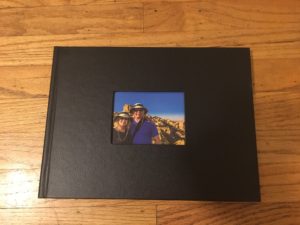
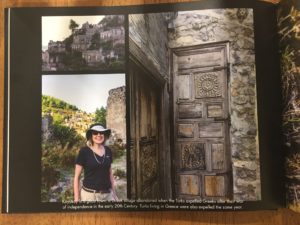
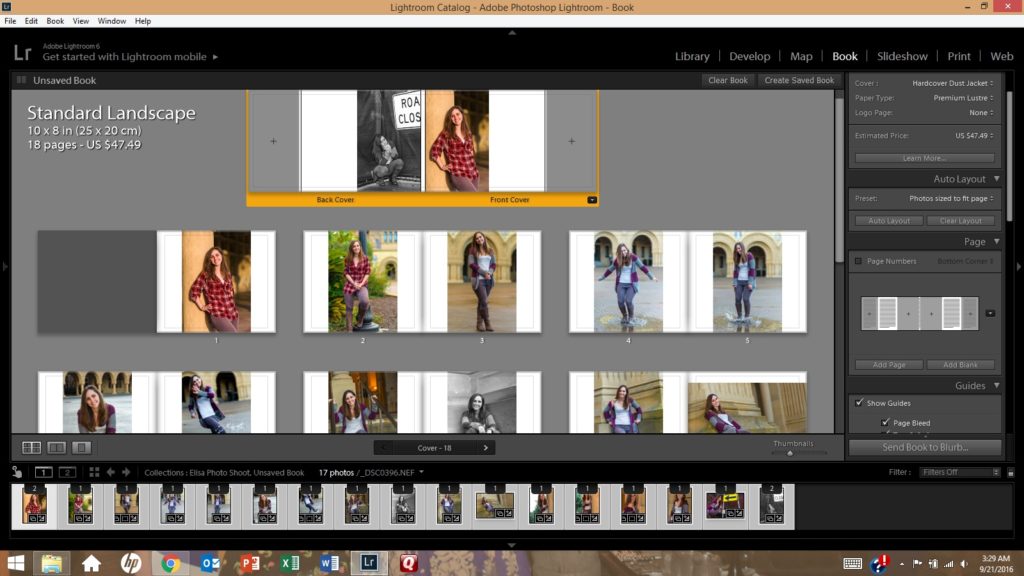 The process of creating a photo book using Lightroom’s Book module (shown here) is fairly straightforward. It’s even more intuitive using an online service such as Snapfish or Shutterfly.
The process of creating a photo book using Lightroom’s Book module (shown here) is fairly straightforward. It’s even more intuitive using an online service such as Snapfish or Shutterfly.













